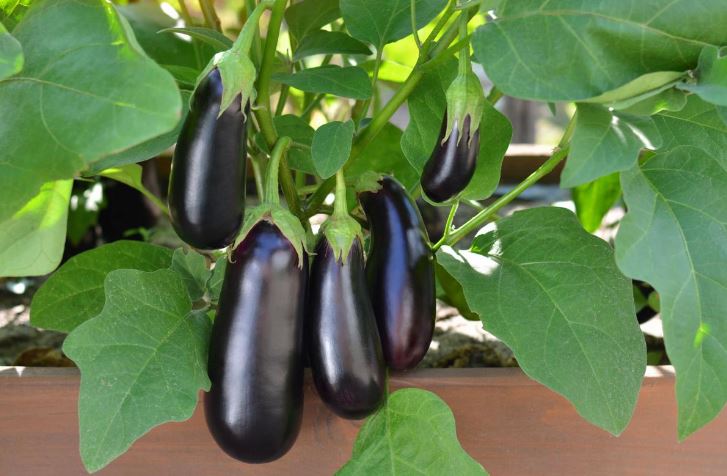Eggplant is a heat-loving crop with a long growing season. This means that the period from germination to fruit harvest in eggplants is between 100 and 150 days, depending on the variety. There are certain rules to keep in mind to grow a good crop of eggplants.
How to plant eggplants in the ground – basic rules
Make sure that the air temperature during the day stays consistently between +12-15°C, and at night it is at least +10°C. The soil to a depth of up to 10 cm must warm up to +15°C – the slightest cooling will cause irreparable damage to the future crop. Remember that seedlings can be planted in the open ground only after they have been growing at home for 50-60 days.
Two weeks before transplanting, expose the seedlings to the open air for 1 hour, and then increase the time by 30-60 minutes each day. This trick will help “harden” the seedlings and the culture will not experience stress during transplanting.
Good days for planting eggplant in June 2022
Experienced gardeners always focus on the phase of the moon before proceeding to fieldwork. Astrologers say this month’s schedule of lunar days is as follows:
- Favorable days for planting eggplant in June 2022: 1, 2, 8, 9, 10, 11, 12, 30.
- Good days for planting eggplant in June 2022: 3, 4, 5, 6, 7, 13, 15, 16, 23, 24, 25, 28.
- Unfavorable days for planting eggplant in June 2022: 14, 17, 18, 19, 20, 21, 22, 26, 27, 29.
Under no circumstances should you transplant seedlings on a waning moon, as well as on a new moon and full moon.
How to plant eggplants in beds – technology
In order to eventually get a good harvest, choose a plot with good light and refrain from planting eggplants in places with stagnant water. Also, consider what plants have grown on the bed before:
- Good predecessors for eggplants: cabbage, carrots, casseroles, passerines, pumpkins, beans, beans, peas, onions, cucumbers, watermelons, and melons.
- Bad precursors for eggplants: peppers, tomatoes, potatoes, and eggplants themselves.
- After you have decided on the place, dig wells, the distance between which will be 40-45 cm.
- The distance between the rows is 60-65 cm. If the soil has not been fertilized, it should be done by digging a hole deeper and putting compost in it. The top of the hole should be slightly covered with earth, and then plant the seedlings.
After planting all the seedlings, do not forget to water the garden occasionally, not allowing the soil to dry out, but also not creating a swamp on the beds. After watering the soil should be loosened every time – this will help to avoid the formation of a crust.



